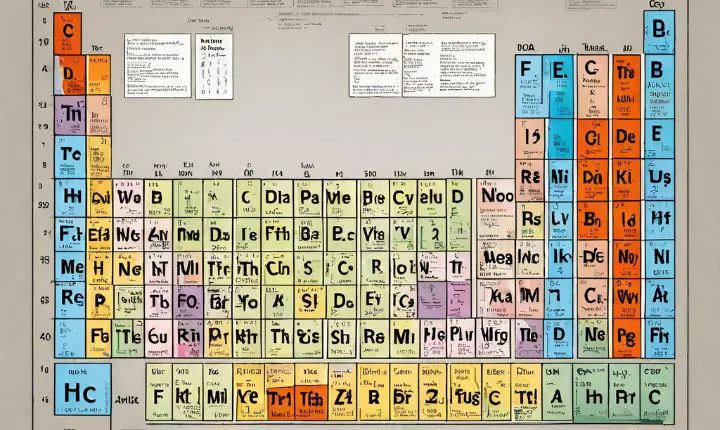How to Read the Periodic Table
The periodic table is a fundamental tool in chemistry, providing a systematic way to organize and understand the properties of elements. Created by Dmitri Mendeleev in 1869, the periodic table has evolved, but its core principles remain the same. For beginners, deciphering the table may seem daunting, but with a basic understanding, you can unlock a wealth…
The periodic table is a fundamental tool in chemistry, providing a systematic way to organize and understand the properties of elements. Created by Dmitri Mendeleev in 1869, the periodic table has evolved, but its core principles remain the same. For beginners, deciphering the table may seem daunting, but with a basic understanding, you can unlock a wealth of information about the elements. In this article, we will guide you through the key components of the periodic table and how to read it effectively.
Table Structure

The periodic table is a tabular arrangement of chemical elements, organized based on their atomic number, electron configuration, and recurring chemical properties. It consists of rows called periods and columns known as groups. Understanding these basic structures is crucial for interpreting the information presented.
- Periods: Rows from left to right on the routine table represent periods. Elements in the same period have the same number of electron shells.
- Groups: Columns from top to bottom represent groups. Elements in the same group share chemical properties and have the same number of electrons in their outermost shell.
Elemental Information: Each element is represented by a square on the periodic table containing essential information:
- Atomic Number: The number of protons in an atom’s nucleus determines an element’s identity. Elements are arranged on the table based on increasing atomic number.
- Element Symbol: A unique abbreviation represents each element, such as H for hydrogen, O for oxygen, and Au for gold.
- Atomic Mass: The average mass of an element’s isotopes, expressed in atomic mass units.
Color-Coding and Categories: The periodic table often uses color-coding and distinct regions to highlight specific groups of elements:
- Metals: Found on the left side and in the center, metals are generally good conductors of heat and electricity.
- Nonmetals: Located on the right side, nonmetals have varied physical states and are often poor conductors.
- Metalloids: Situated between metals and nonmetals, metalloids exhibit properties of both.
Block Designations: Elements are also categorized based on the subshells in which their electrons are located.
- S-block: Groups 1 and 2, including helium, are located on the left side.
- P-block: Groups 13 to 18, excluding helium, form the right side.
- D-block: Transition metals are placed in the center.
- F-block: Lanthanides and actinides are usually shown at the bottom.
FAQs
Q1: What is the periodic table?
A: The periodic table is a tabular arrangement of chemical elements, organized based on their atomic number, electron configuration, and recurring chemical properties. It provides a systematic way to understand and categorize the elements.
Q2: How is the periodic table structured?
A: The periodic table consists of rows called periods and columns known as groups. Elements in the same period have the same number of electron shells, while elements in the same group share similar chemical properties.
Q3: What information does each element’s square on the periodic table contain?
A: Each element square includes the atomic number (number of protons), element symbol (unique abbreviation), and atomic mass (average mass of isotopes).
Q4: How are elements arranged on the periodic table?
A: Elements are arranged based on increasing atomic number. This arrangement helps highlight patterns in the properties and behaviors of elements.
Conclusion
With a grasp of the basic principles, reading the periodic table becomes an invaluable skill in chemistry. As you explore the table’s patterns and relationships, you’ll gain insights into the properties and behaviors of various elements. Remember that the periodic table is a dynamic tool, constantly updated to reflect our evolving understanding of the elements, and continued exploration will deepen your appreciation for the wonders of the chemical world.






